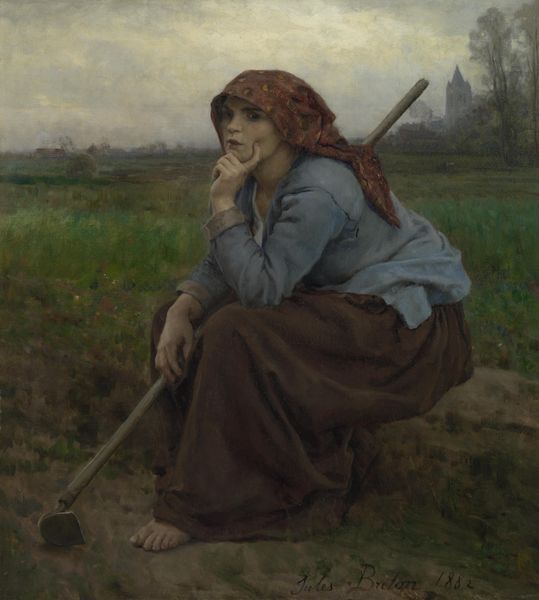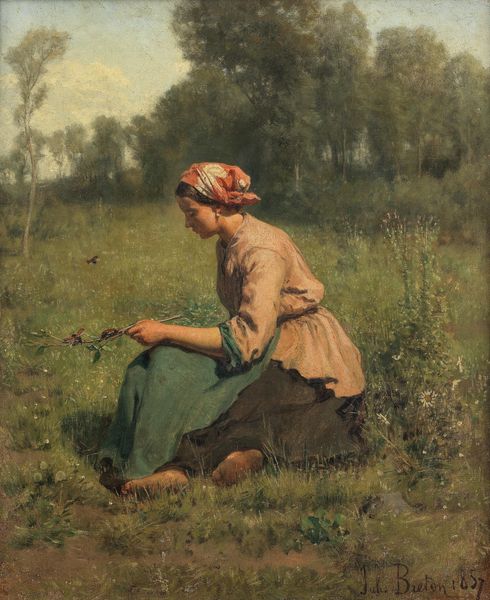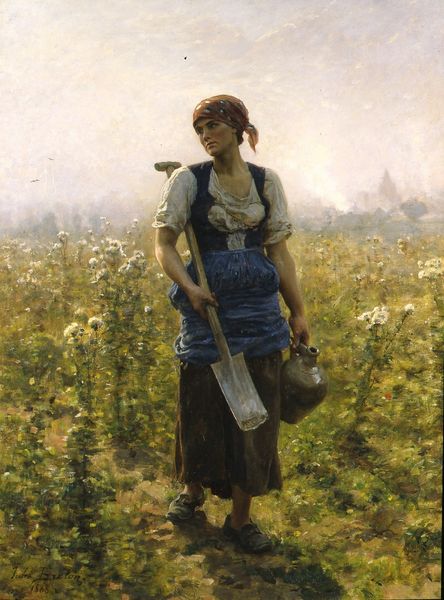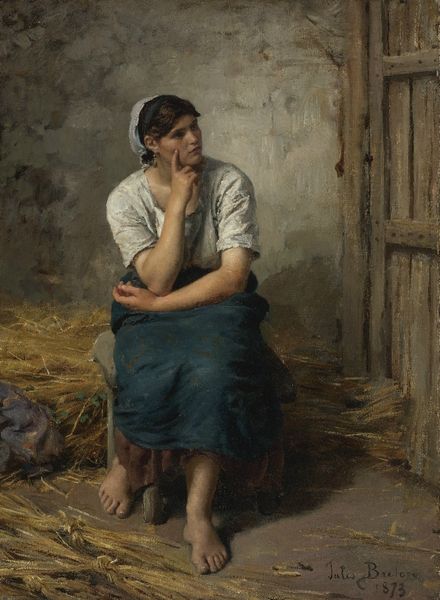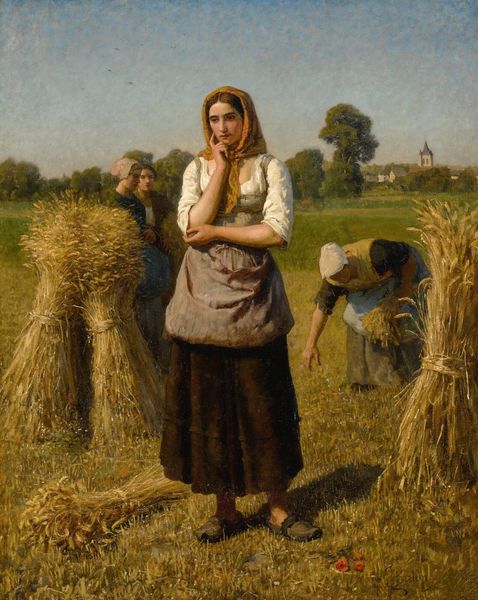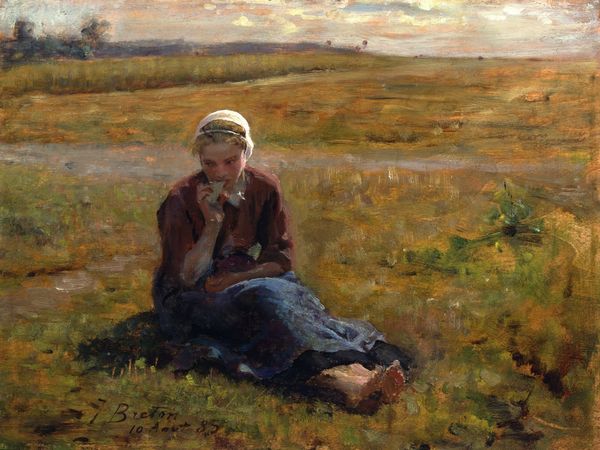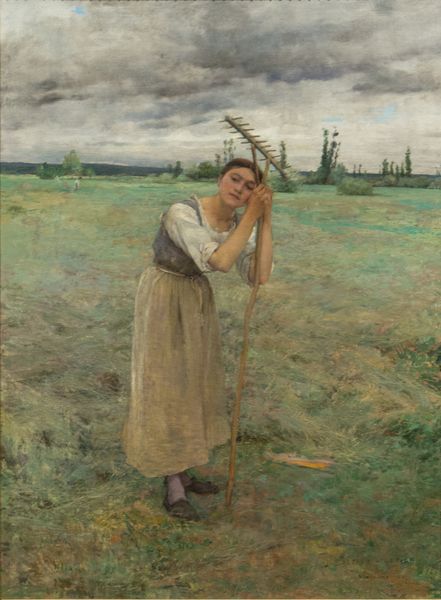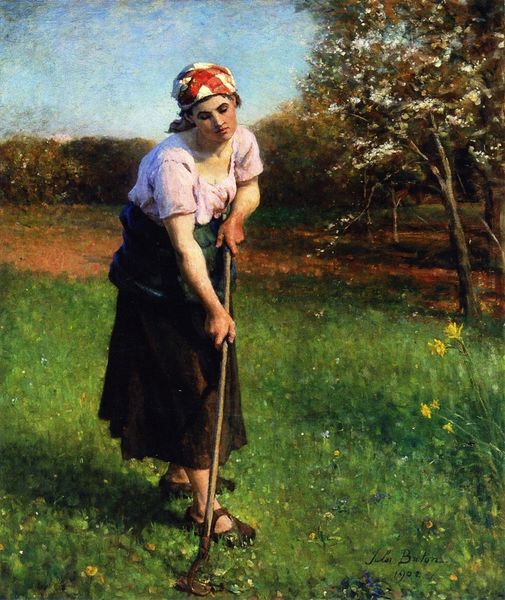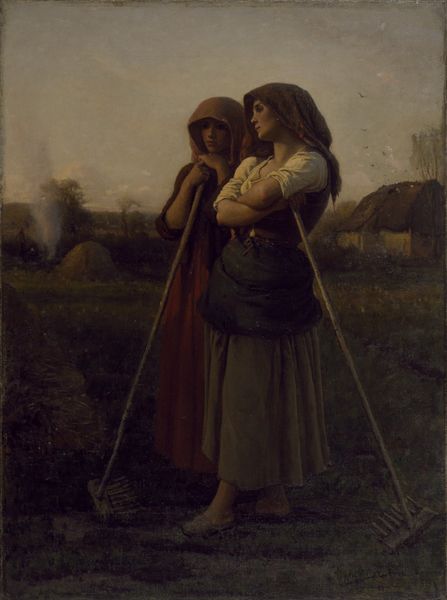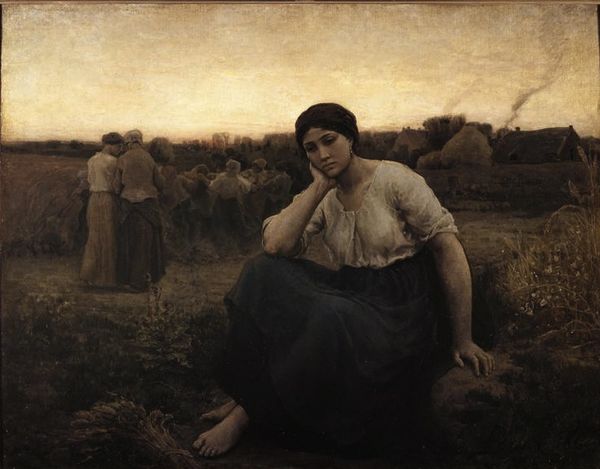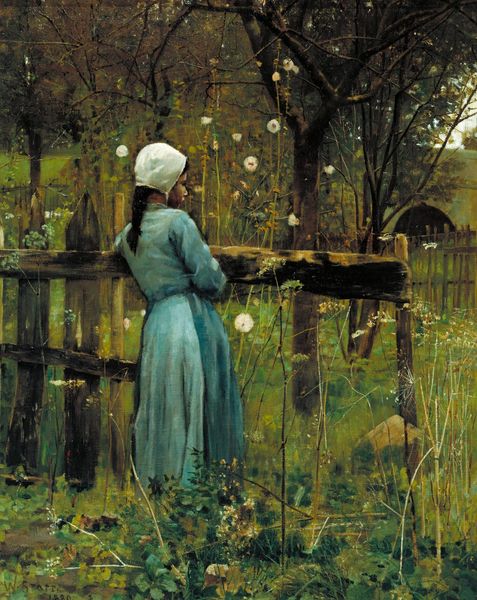
Dimensions: 74.6 x 63.5 cm
Copyright: Public domain
Editor: Jules Breton’s “Summer,” painted in 1891 using oil paints, strikes me as incredibly serene. There's a real sense of quiet contemplation in the figure. How do you interpret this work, especially considering the context of the time it was created? Curator: That's a perceptive observation. While beautiful, it's vital to understand these pastoral images in their socio-political context. Breton painted during a period of immense social upheaval and industrialization in France. This image presents a romanticized, almost nostalgic view of rural life. Editor: So, you're saying it's more than just a pretty picture? Curator: Precisely. Images of peasants were hugely popular at the Paris Salon, and this idyllic representation likely served to mask the harsh realities of agricultural labor and rural poverty. Look at how idealized the woman's features are, and the composition that emphasizes nature. Breton, and artists like him, profited from the appetite of urban elites who yearned for an imagined, simpler past. Consider who was consuming this art, and what their motivations might have been. Editor: That makes me see it very differently. It’s not just about capturing a moment; it’s about creating a narrative for a specific audience. What role do you think museums play in shaping this narrative today? Curator: Museums have a responsibility to contextualize these artworks, to present not just the beautiful image but also the complex social forces at play. It is crucial for viewers to question whose perspectives are being presented and whose are being left out. It’s an ongoing process of re-evaluation and dialogue. Editor: That’s definitely given me a lot to think about. I always appreciated the aesthetics, but now I'm considering the layers of societal influence and the power of artistic representation. Curator: And hopefully a more critical understanding of art’s place in our visual culture!
Comments
No comments
Be the first to comment and join the conversation on the ultimate creative platform.
